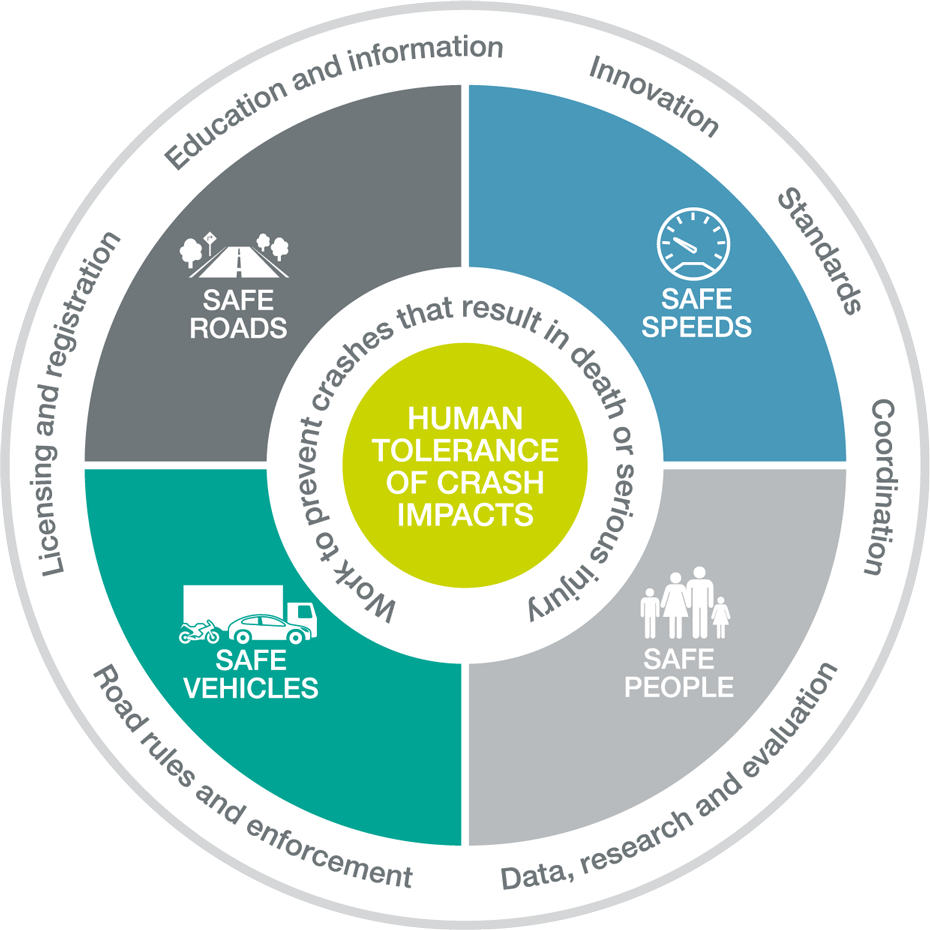|
The National Road Safety Strategy is based on the Safe System approach to improving road safety. This involves a holistic view of the road transport system and the interactions among roads and roadsides, travel speeds, vehicles and road users. It is an inclusive approach that caters for all groups using the road system, including drivers, motorcyclists, passengers, pedestrians, cyclists, and commercial and heavy vehicle drivers. Consistent with our long-term road safety vision, it recognises that people will always make mistakes and may have road crashes—but the system should be forgiving and those crashes should not result in death or serious injury. Key inputs to the Safe System are:
The Safe System approach was adopted in Australia during the period of the previous national strategy, through the National Road Safety Action Plans and the strategies of individual states and territories. It is consistent with the approaches adopted by the safest countries in the world, and is a central theme of the landmark OECD report Towards Zero: Ambitious road safety targets and the safe system approach, published in 2008. There are several guiding principles to this approach:
Shared responsibilityWhile individual road users are expected to be responsible for complying with traffic laws and behaving in a safe manner, it can no longer be assumed that the burden of road safety responsibility simply rests with the individual road user. Many organisations—the ‘system managers’—have a primary responsibility to provide a safe operating environment for road users. They include the government and industry organisations that design, build, maintain and regulate roads and vehicles. These and a range of other parties which are involved in the performance of the road transport system and the way roads and roadsides are used, all have responsibility for ensuring that the system is forgiving when people make mistakes.
Road safety responsibilities also extend to various professional groups, as well as the broader community. For example: health professionals have a role in helping their clients to manage their safety on the roads; and parents contribute significantly to the road safety education of their children—not only through their direct supervision of learner drivers, but also by modelling their own driving and road user behaviour.
1 Comment
8/2/2021 05:26:58 pm
I found this on internet and it is really very nice.
Reply
Leave a Reply. |
AuthorDavid Wilkins, Principal & Senior Traffic Engineer. Archives
August 2023
Categories
All
|

 RSS Feed
RSS Feed